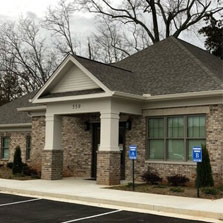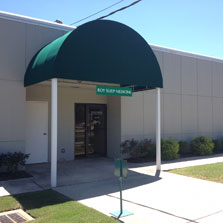 Continuous positive airway pressure (CPAP) is considered the gold standard of care for the treatment of obstructive sleep apnea. CPAP works by blowing ambient air at a set pressure to maintain a patent upper airway during sleep. CPAP eliminates snoring when used at the correct pressure.
Continuous positive airway pressure (CPAP) is considered the gold standard of care for the treatment of obstructive sleep apnea. CPAP works by blowing ambient air at a set pressure to maintain a patent upper airway during sleep. CPAP eliminates snoring when used at the correct pressure.
CPAP has been shown to:
- Lower blood pressure
- Reduce sleepiness
- Reduce fatigue
- Improve energy levels
- Improve diabetic control
- Improve overall quality of life
CPAP is tolerated very well by our patients. Roy Sleep Medicine utilizes state-of-the-art CPAP machines that are quiet and compact. We also offer numerous mask interfaces to our patients to optimize comfort. CPAP masks are fitted by dedicated, caring CPAP coordinators with an on-site CPAP clinic to ensure patient satisfaction. Through a more comprehensible, patient-centered approach, patients enjoy the best experience at Roy Sleep Medicine. For those patients who experience difficulty utilizing their CPAP, Dr. Roy also utilizes research-guided tools to assist those patients become more compliant on CPAP.
For patients who are doing well on their CPAP, Roy Sleep Medicine also facilitates patients by providing CPAP supplies at patient request so a clinic visit may not be necessary when the same supplies are needed in future. Dr. Roy believes strongly that CPAP is not necessarily the only treatment in patients with sleep apnea. He insists on appropriate follow up to discuss each patient’s progress and to make appropriate changes as necessary. If the time is spent in the beginning with patient education, treatment goals, and weight optimization, long term results are more easily attained.
- Tomfohr LM; Ancoli-Israel S; Loredo JS; Dimsdale JE. Effects of continuous positive airway pressure on fatigue and sleepiness in patients with obstructive sleep apnea: data from a randomized controlled trial. SLEEP 2011;34(1):121-126.
- Hypertension. 2011 Mar;57(3):549-55
- Sleep. 2008 Nov;31(11):1551-8.
- Sleep Breath. 2005 Dec;9(4):176-80.









KEEP IN TOUCH WITH US